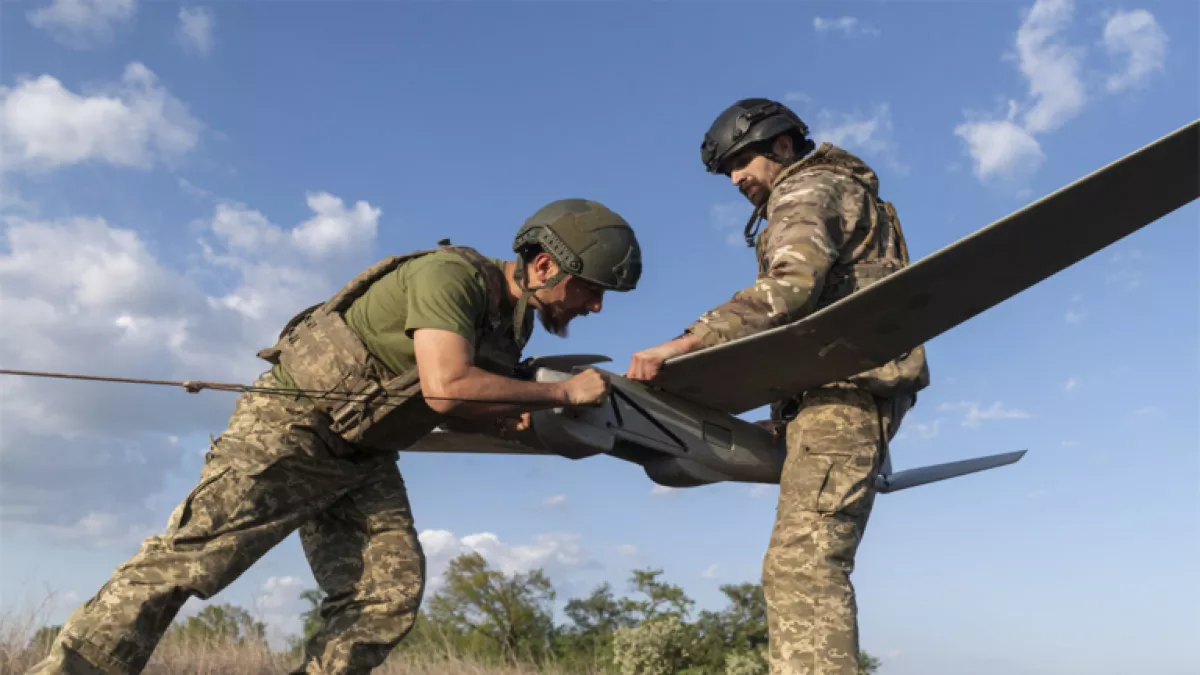Ukraine’s defence tech revolution not silver bullet West thinks it is Analysis by War on the Rocks
For years, Western media and policymakers have celebrated Ukraine as a model for military innovation. From agile drone development to AI-assisted targeting and a web of grassroots defence startups, Kyiv’s wartime ingenuity has been hailed as a glimpse into the future of war. But as Ukrainian tech entrepreneur Vitaliy Goncharuk argues in his War on the Rocks piece, this narrative leaves out hard truths.
By 2025, battlefield realities have tempered early optimism. Even some of Ukraine’s own top commanders, along with US military analyst Michael Kofman, acknowledge that Russia has overtaken Ukraine in certain areas of defence technology adoption. This shift opens the door for a more candid discussion: which parts of Ukraine’s wartime innovation actually work for Western militaries preparing for conflict with major powers like China and Russia — and which don’t?
Goncharuk’s verdict is clear: Ukraine’s model, forged under extreme duress, is valuable for short-term survival, but ill-suited as a blueprint for long-term, high-intensity competition.
Decentralisation: From strength to liability
When Russia’s full-scale invasion began, Ukraine’s state procurement system ground to a halt. In practice, military units were allowed to buy what they needed themselves, while volunteer groups and charitable foundations stepped in to provide everything from helmets to vehicles — sometimes delivered through commercial couriers.
This wartime decentralisation cut through bureaucracy, reduced corruption at the top, and allowed units to equip themselves quickly. Small drone companies emerged in this environment, reinvesting profits into further development.
But by 2025, the cracks were showing. With minimal oversight, corruption trickled down to the unit level. Equipment purchases became fragmented, interoperability suffered, and economies of scale were lost. The Ukrainian model solved the problem of state paralysis — but in a long war, Goncharuk warns, such decentralisation can undercut strategic resource allocation.
Russia, he notes, is already demonstrating the benefits of a more centralised, integrated procurement system.
Too many platforms, not enough scale
Ukraine’s procurement chaos fostered a boom in small defence manufacturers. Thousands of firms churned out drones, software, and other battlefield tools. This helped Ukraine plug urgent capability gaps in 2022.
But as Russian electronic warfare evolved, weaknesses emerged. By 2025, only 20–40% of Ukraine’s first-person-view drones were hitting their targets. The real cost of destroying a tank was far higher than the advertised $500, thanks to GPS jamming and other countermeasures.

Most Ukrainian firms lacked the engineering depth to adapt — few developed fiber-optic control systems or autonomous navigation for GPS-denied environments. Many were little more than assembly shops, unable to move beyond basic designs.
Russia’s approach, by contrast, concentrated R&D in a handful of major firms producing standardised, upgradeable systems like the Geran/Shahed drones. This built a coherent “technology stack” that was easier to mass-produce, refine, and deploy.
Ukraine’s fragmented “zoo” of platforms, Goncharuk argues, simply cannot be scaled for sustained warfare.
Startup surge without strategy
Before 2022, Ukraine’s defence industry was in poor shape. The state-owned Ukroboronprom conglomerate managed over 130 mostly Soviet-era enterprises, focused more on corporate reform than innovation. The private defence sector was tiny.
When the war began, the only sizable tech talent pool came from civilian IT sectors like fintech and software-as-a-service. They adapted quickly, organising hackathons, competitions, and accelerators for defence projects.
But there was no coherent strategy — no deep study of Russian military tech, no long-term roadmap, no unified design standards. Flagship initiatives like the Brave1 accelerator offered networking and small grants, but little in the way of systemic planning or industrial integration.
The result: lots of rapid prototypes, but few production-ready systems suitable for mass deployment.
Goncharuk stresses that Ukraine’s greatest contribution may be its demonstration of “the loop”: the rapid cycle of designing, testing, and iterating equipment directly on the battlefield. This wartime feedback loop forced quick problem-solving and saved lives.
But sustaining such a system in peacetime — without the existential urgency of invasion — is far harder. China, for example, maintains constant production and R&D momentum through dual-use commercial firms like DJI, keeping engineers and supply chains in fighting shape.
A startup ecosystem alone can’t do this. Large-scale, integrated defence engineering platforms require long-term state coordination, steady investment, and a focus on interoperability and industrial capacity — not just grants and meetups.
Agility’s limits in long war
In the early war years, Ukraine’s decentralised, improvisational model worked because nothing else could. It mobilised thousands of teams, filled urgent gaps, and leveraged civilian ingenuity.
But by 2024–2025, its weaknesses were undeniable:
-
No unified architecture meant poor interoperability.
-
Lack of scale hindered mass production.
-
Weak engineering base limited adaptation to enemy advances.
-
Fragmented procurement wasted resources and enabled corruption.
This approach is invaluable for a nation whose defence ecosystem has collapsed — but it is not a substitute for a mature, coordinated defence-industrial base.
West’s takeaway
Goncharuk warns that transplanting Ukraine’s wartime startup model wholesale into US or NATO planning could backfire. The wars of the late 2020s are likely to pit the West against China or Russia in conflicts demanding scale, coordination, and technological coherence.
China and Russia are already aligning industrial partners, narrowing platform types, and planning years ahead. The decisive factor in future wars, he argues, won’t be the number of drones or startups, but the ability to produce deeply integrated, scalable, and resilient defence ecosystems.
Ukraine’s experience offers real lessons in mobilisation speed, flexibility, and improvisation under fire. But without the structural backbone of a mature industrial system, such agility can’t carry a nation through a long, grinding war against a peer adversary.
Ukraine’s innovation under fire was remarkable and necessary — but it was a crisis response, not a master plan, the article argues. For the West, the real challenge is to blend that wartime agility with the long-term strategic statecraft needed to outproduce and out-innovate the great powers of the future.
By Sabina Mammadli








